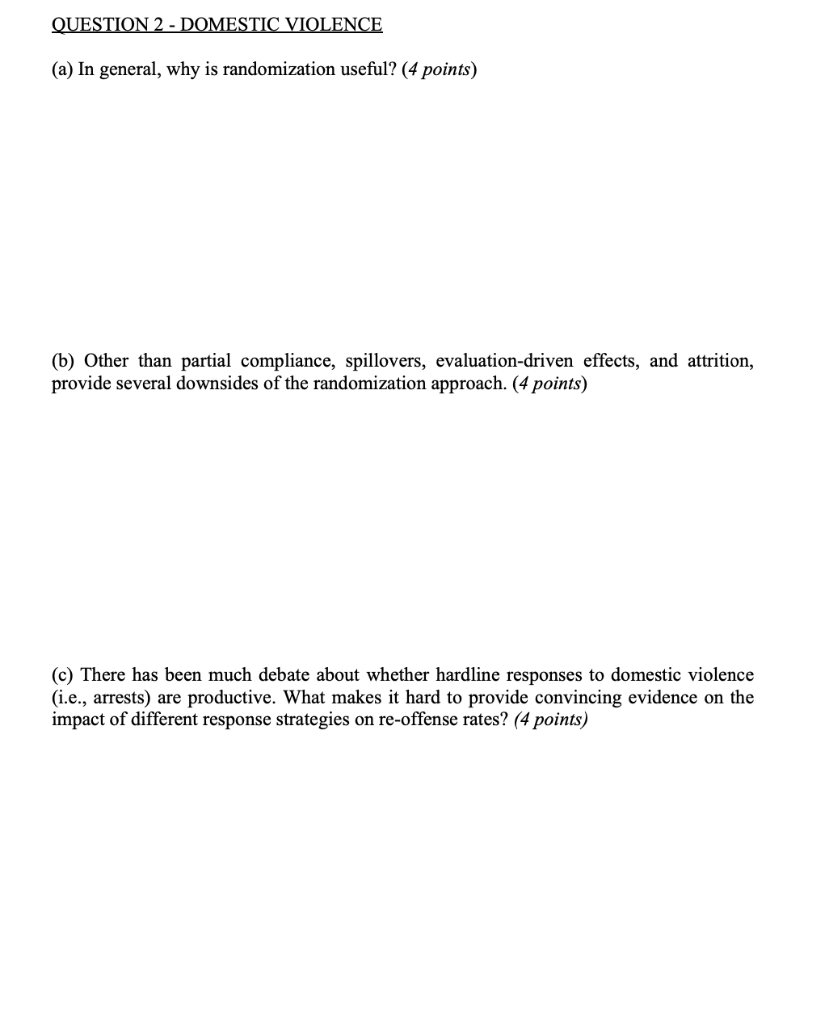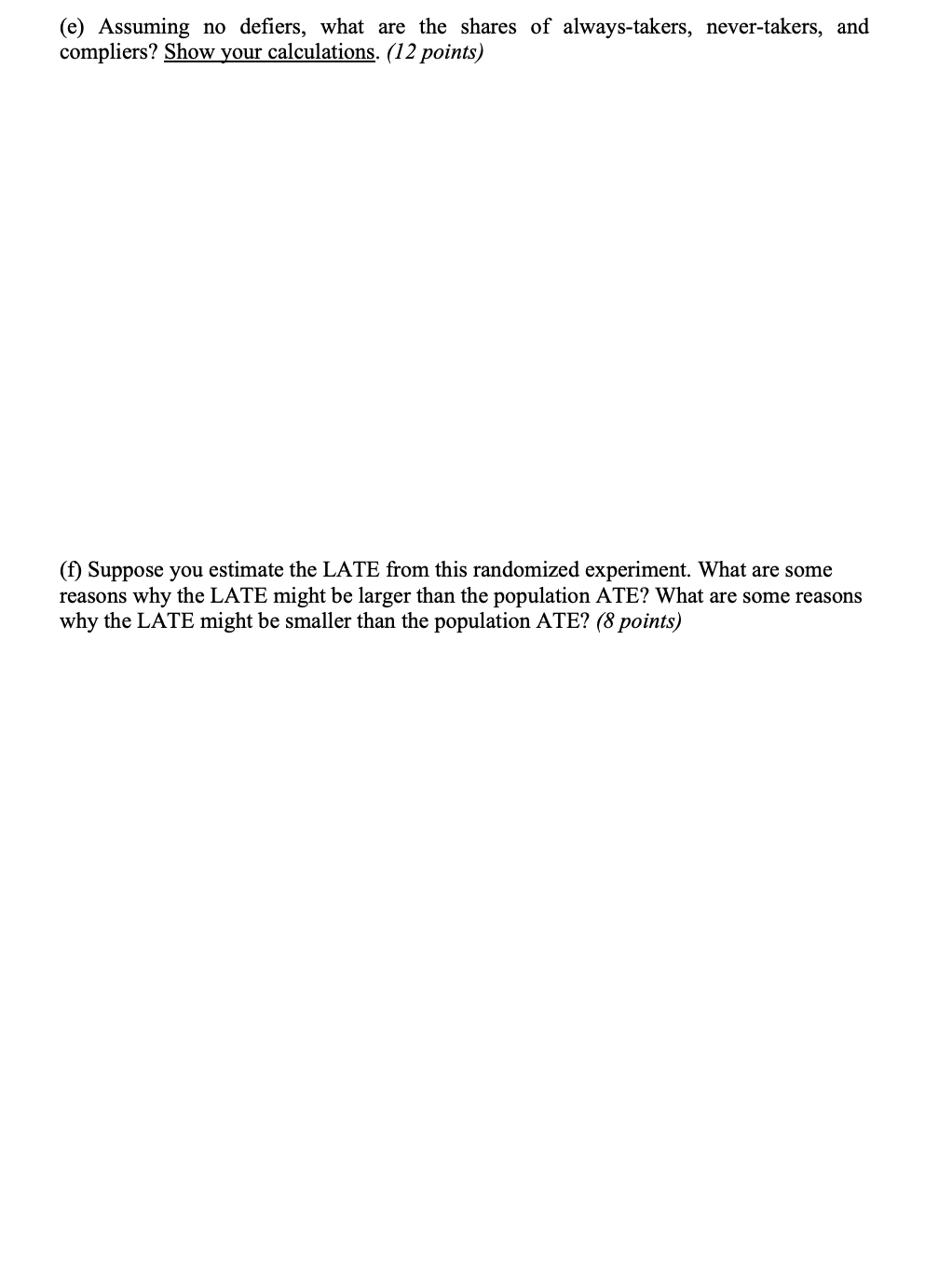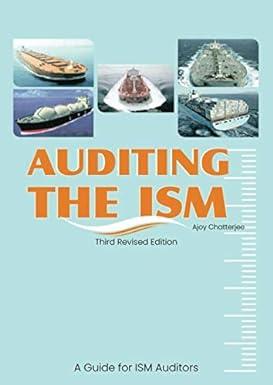Answered step by step
Verified Expert Solution
Question
1 Approved Answer
QUESTION 2 - DOMESTIC VIOLENCE (a) In general, why is randomization useful? (4 points) (b) Other than partial compliance, spillovers, evaluation-driven effects, and attrition, provide



Step by Step Solution
There are 3 Steps involved in it
Step: 1

Get Instant Access to Expert-Tailored Solutions
See step-by-step solutions with expert insights and AI powered tools for academic success
Step: 2

Step: 3

Ace Your Homework with AI
Get the answers you need in no time with our AI-driven, step-by-step assistance
Get Started


